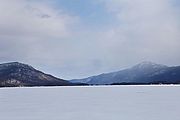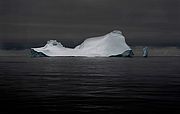While the Adirondack region is in the temperate deciduous forest biome, it is also on the edge of several other biomes – the boreal forest, grassland, woodland, and shrubland biomes. A biome is a naturally occurring habitat for certain species. Being on the edge of several could cause the Adirondacks to see shifts in temperature and moisture sooner than the surrounding area.
News from Selected Month
Otter Creek is the largest wetland in the State of Vermont, stretching 15 miles through Addison and Rutland counties. As the current presidential administration rolls back national wetland protection rules, local groups seek stronger protections for the Otter Creek wetland. This wetland is a valuable resource, not only for its rare and diverse species, but also for its ability to absorb floodwaters. The wetlands and floodplains along the Otter Creek are credited with protecting the town of Middlebury from more than $1.8 million of flood damage during Tropical Storm Irene.
The Vermont angling community voiced concerns with Gov. Phil Scott’s proposal to close the Salisbury Hatchery, one of the state’s five fish hatcheries. This hatchery is the primary source of trout eggs for the state. The hatchery would soon need $13 million in upgrades to meet clean water standards, which figured into the decision to close it.
In its 2019 report card, the Vermont section of the American Society of Civil Engineers (ASCE) gave the state’s infrastructure a “C” – the same grade it earned in the last report card five years ago. The report was broken down into several areas of infrastructure, with stormwater and wastewater infrastructure both receiving a D+, the lowest grades of the report. Civil engineers identified that the state is facing over a billion dollars in investment gaps over the next 20 years for stormwater alone.
The Great Lakes are one of the world’s largest fresh water sources, covering over 750 miles across eight states. However, a recent investigation by Great Lakes Today and American Public Media reveals that the cost of water has doubled, and even tripled, in cities surrounding the lakes. According to this investigation, there have been hundreds of thousands of water shutoffs to homes and businesses since 2010. On top of having to pay the full water bill to restore service, there are often extra fees for shutting it off and turning it back on. For the average individual, losing water service can be the beginning of a downward spiral.
The growing water crisis in America has forced hundreds of thousands to endure weeks, and even months, without water. This crisis is especially dire where you would least expect it – in the Great Lakes region, the most abundant source of fresh water in the country. With the federal government cutting water infrastructure funding, cities have turned to raising water bills to cover the costs of aging infrastructure. These rising costs hit poor families the hardest, with disproportionately high concentrations of water shut-offs in poorer areas, and majority black and Latino neighborhoods, in every city.
According to a report released by the Rhodium Group, a private climate-research firm, carbon dioxide emissions in the U.S. increased by roughly 3.4% in 2018 – this after three years of decline. The report points to a particularly cold winter and economic growth as the main contributors. While this appears to pit climate change reductions against economic growth, it’s entirely possible to lower emissions while improving the economy. Climate change is a leading contributor to many expensive environmental issues, including increased cyanobacteria blooms, stormwater runoff, and other water quality concerns.







